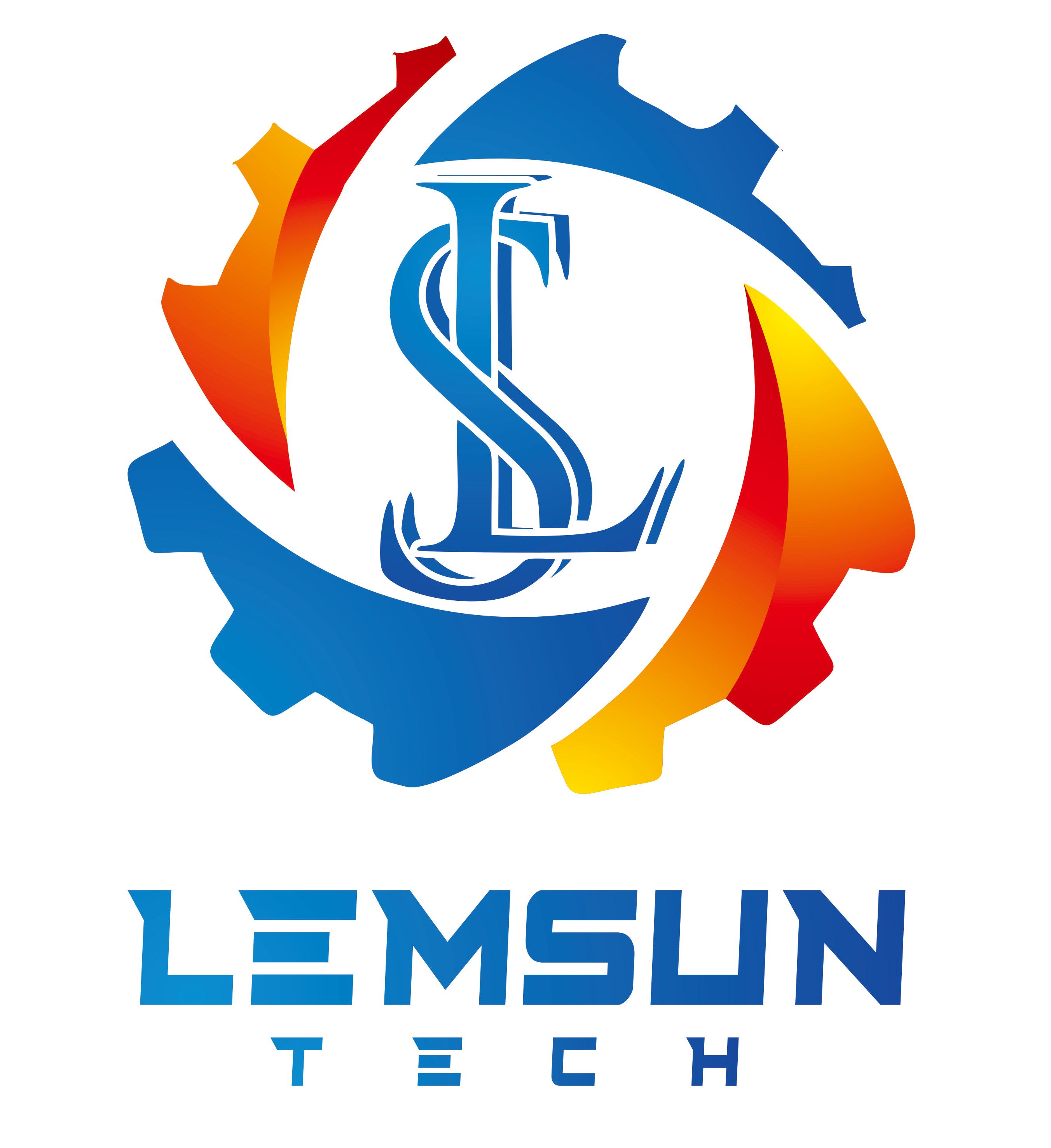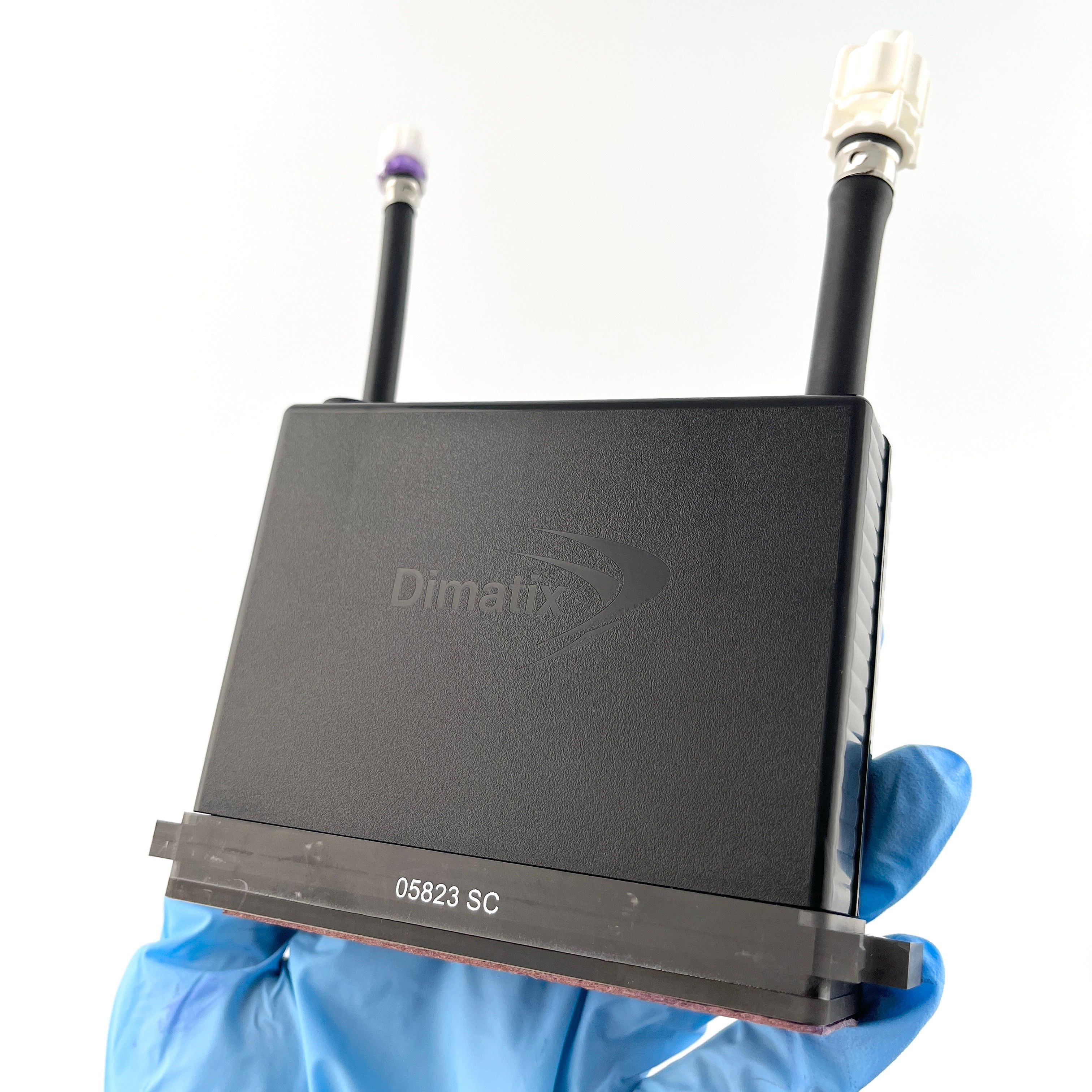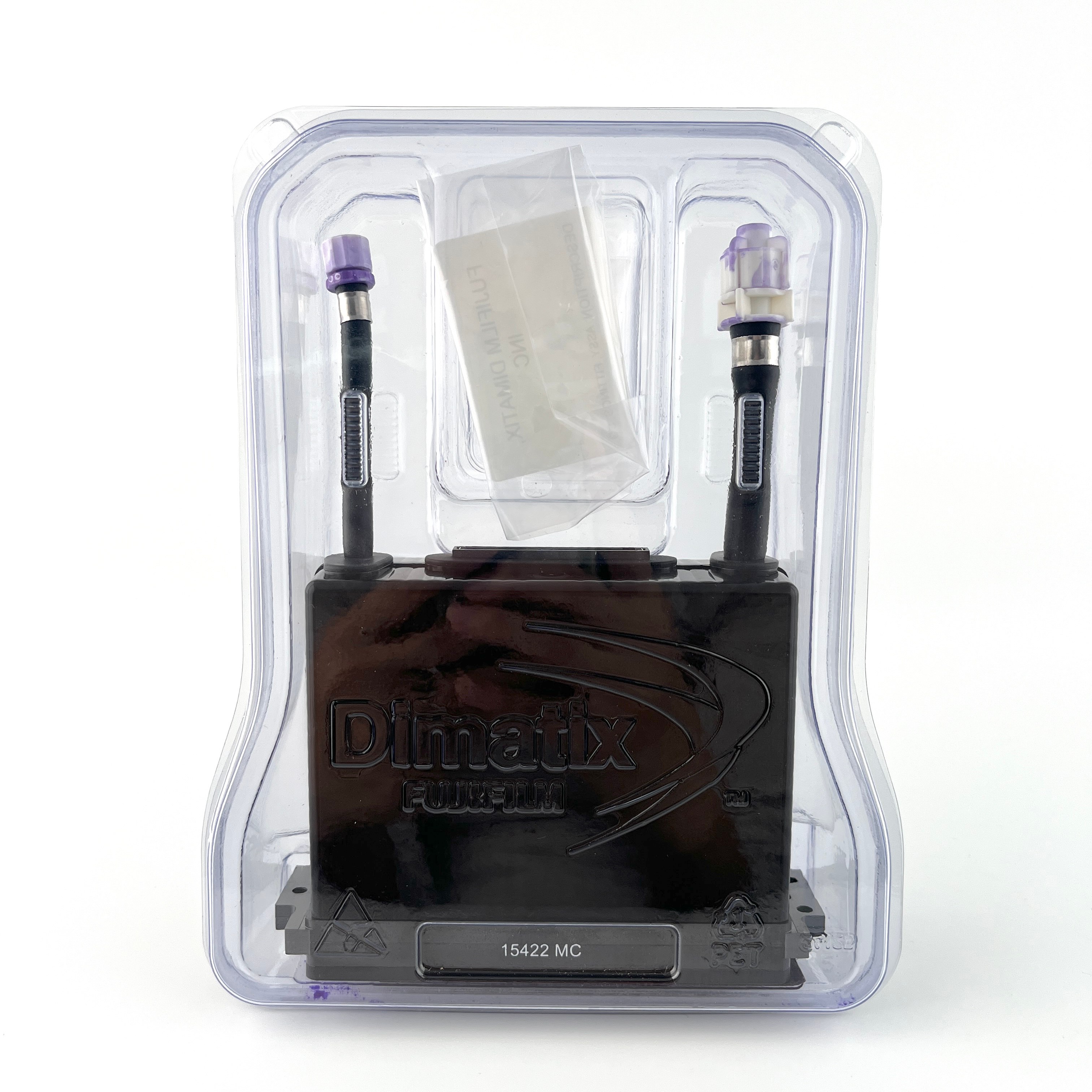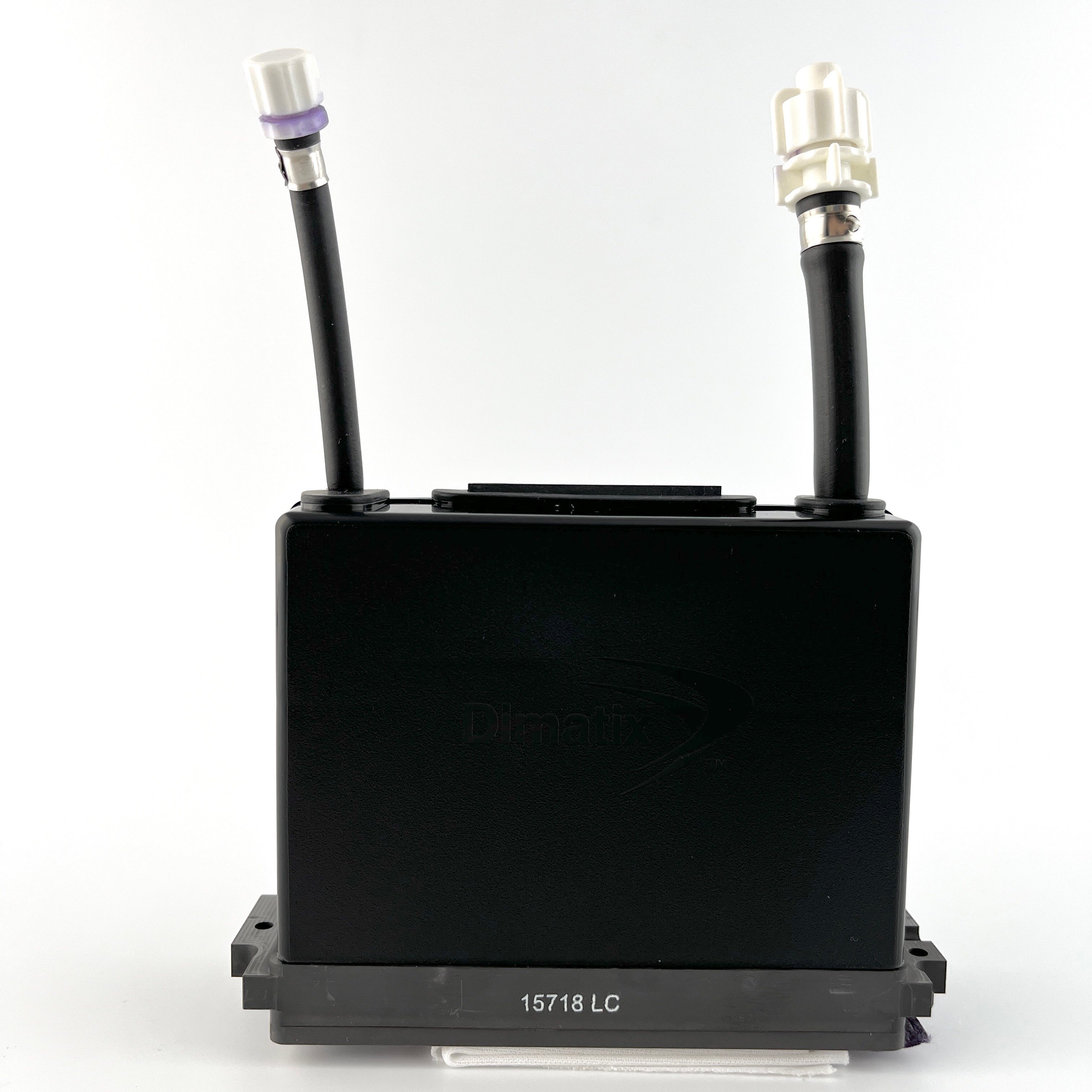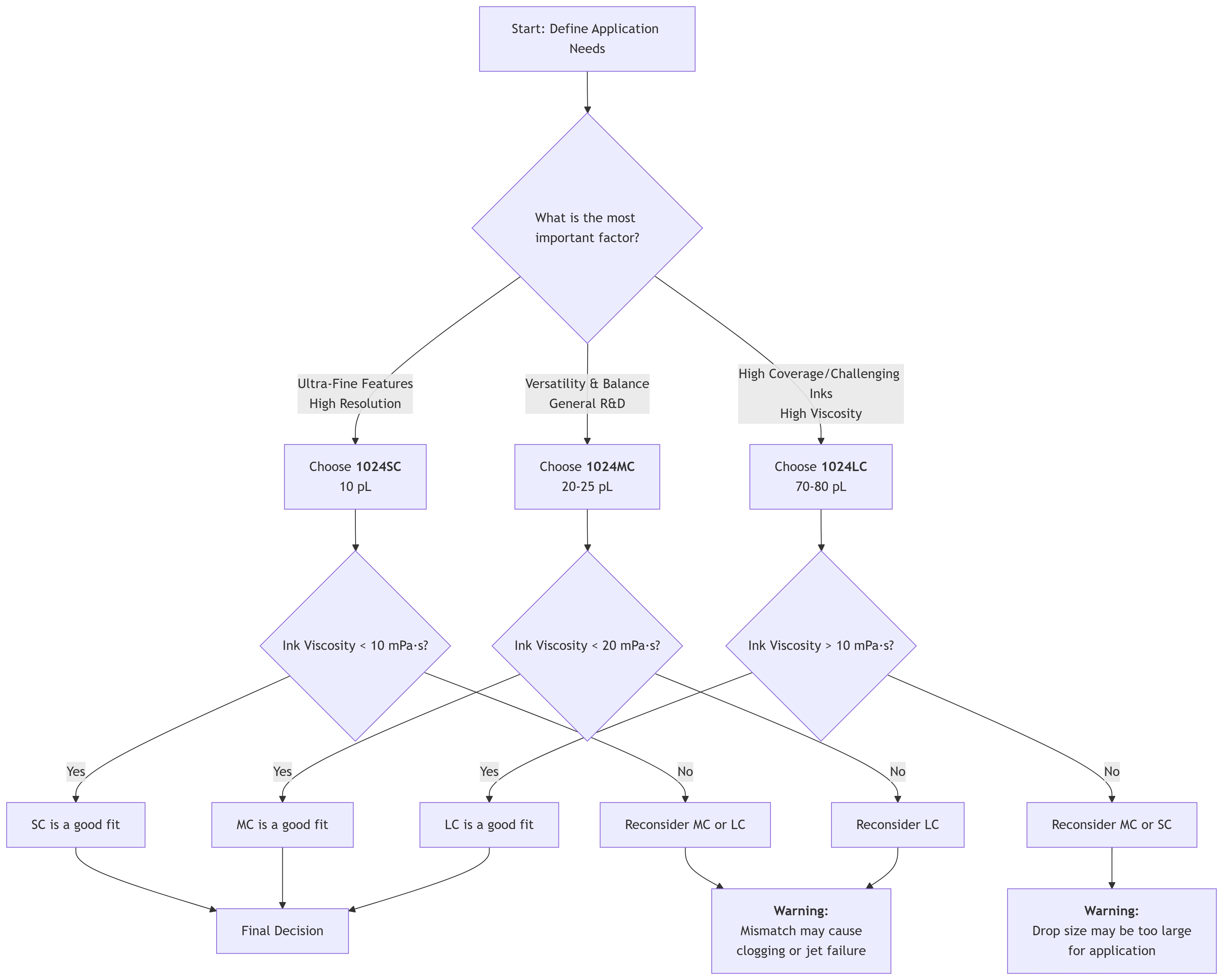1. Key Differences at a Glance
The primary difference lies in the native drop size they are designed to produce, which directly affects resolution, firing frequency, and most importantly, ink compatibility.
| Feature | Dimatix 1024SC | Dimatix 1024MC | Dimatix 1024LC |
|---|---|---|---|
| Full Name | Small Cartridge | Medium Cartridge | Large Cartridge |
| Native Drop Volume | ~10 picoliters (pL) | ~20-25 picoliters (pL) | ~70-80 picoliters (pL) |
| Nozzle Diameter | Smallest (~21.5 µm) | Medium (~26 µm) | Largest (~38 µm) |
| Optimal Resolution | Highest (for fine details) | High (good balance) | Standard (for coverage) |
| Viscosity Range | Lowest (best for low-viscosity inks) | Medium | Highest (best for higher-viscosity inks) |
| Firing Frequency | Up to 20 kHz | Up to 15 kHz | Up to 5 kHz |
| Key Strength | High precision, fine features | Versatility, balance | Robustness, high-coverage, specialty inks |
2. Detailed Comparison
a) Dimatix 1024SC (Small Cartridge)
- Purpose: Designed for the highest precision printing. It produces the smallest drops (~10 pL), making it ideal for applications requiring extremely fine features and high resolution.
- Ink Compatibility: Best suited for low-viscosity inks (typically 1-2 mPa·s, up to ~10 mPa·s). This includes many standard solvents, weak acids, and aqueous-based inks. Its small nozzle diameter is more prone to clogging with particles or viscous fluids.
- Typical Applications:
- Printed electronics (fine circuit traces, antennas)
- High-resolution biological patterning (protein arrays, DNA microarrays)
- Photolithography mask printing
- Any R&D work where feature size is the most critical parameter.
b) Dimatix 1024MC (Medium Cartridge)
- Purpose: The versatile “all-rounder”. It offers a excellent balance between drop size (~20-25 pL) and operational robustness. It’s the most commonly used printhead for general R&D purposes.
- Ink Compatibility: Handles a broader range of ink viscosities than the SC, typically up to 15-20 mPa·s. It can reliably jet a wider variety of functional inks, including those with nanoparticles (e.g., silver nanoparticle inks).
- Typical Applications:
- General material deposition R&D
- Printed electronics (broader traces, larger devices)
- Life sciences (cell printing, hydrogel deposition)
- A great starting point for most new ink formulations.
c) Dimatix 1024LC (Large Cartridge)
- Purpose: Designed for high coverage and/or challenging fluids. It produces large drops (~70-80 pL) and is engineered to handle higher viscosity inks that the SC and MC cannot.
- Ink Compatibility: Designed for the highest viscosity inks of the three (can handle fluids up to ~25-30 mPa·s, depending on other properties). Its larger nozzle diameter is much less prone to clogging from particulates or agglomerates.
- Typical Applications:
- Printing polymers (e.g., PEDOT:PSS, OLED materials)
- Printing high-viscosity biological materials (e.g., bio-inks with high cell density, thick hydrogels)
- Applying adhesives or coatings
- Printing inks with larger nanoparticles or pigments.
3. How to Choose the Correct Printhead for Your Printer
Choosing the right printhead is a decision based almost entirely on your ink properties and your application requirements. Follow this decision flowchart:
Step-by-Step Selection Guide:
- Characterize Your Ink: This is the most critical step. You must know:
- Viscosity (at jetting temperature): This is the #1 factor.
- 1-10 mPa·s: All three can work, but SC and MC will be more precise.
- 10-20 mPa·s: MC is ideal. LC will work but with large drops. SC will likely fail.
- 20-30+ mPa·s: LC is the only option.
- Particle Size (if applicable): The rule of thumb is that the maximum particle size should be less than 1/100th of the nozzle diameter to prevent clogging.
- SC: < 0.2 µm particles
- MC: < 0.26 µm particles
- LC: < 0.38 µm particles
- Surface Tension: Generally should be between 20-40 dynes/cm for all Dimatix heads.
- Viscosity (at jetting temperature): This is the #1 factor.
- Define Your Application Requirements:
- Do you need the finest possible lines and details? -> Prioritize the 1024SC.
- Do you need to cover a large area quickly or print thick layers? -> Prioritize the 1024LC.
- Are you experimenting with a new, unknown ink? -> Start with the 1024MC as it offers the best balance of performance and tolerance.
- Consider Operational Factors:
- Clogging: If your ink is prone to drying or agglomeration, the larger nozzle of the LC is more forgiving.
- Startup/Maintenance: The MC and LC are generally considered more robust and easier to maintain for daily use.
- Cost: While the heads themselves have similar price points, downtime from clogging a more sensitive head (SC) can be a hidden cost.
Final Recommendation:
- For most new users and general R&D, the Dimatix 1024MC is the recommended starting point. It provides a wide operating window and is forgiving enough to learn on while still producing high-quality results.
- Only choose the SC if your application demands the highest resolution and you are confident your ink is well-suited for it.
- Choose the LC when your ink’s viscosity or particle size forces you to, or when your primary goal is rapid material deposition rather than fine features.
Post time: Aug-25-2025
